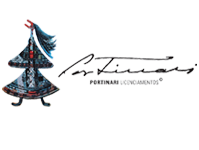Among over 5,000 works made by Candido Portinari that are available on this portal, four were selected for these “Teaching Suggestions." They have 3 different themes: still life, landscape and the human figure, and they were made in the 1930s, ‘40s and ‘50s. This content was designed for teachers who work with early elementary students.
THEME: STILL LIFE
Notes:
1. The name "still life" is given to paintings or drawings of a group of inanimate objects, such as fruits, animal flesh (like that used in cooking: fish, poultry, shellfish), domestic objects (vases, teapots, plates, cups, etc.).
2. Ask students to name the different objects Portinari used in a "still life." Then ask them what materials were used to make the objects (wood for tables; glass for bottles; fabric for towels). Note with the students that the artist is able to communicate to the viewer exactly which material the objects were made from using only his brushes and paint. How can he convey this to the people who see it?
3. The artist uses different "planes" to show that the objects are not all in a row, in one straight line. What is in the "first plane" (foreground)? And in the “back plane” (background)?
Suggestions:
1. Using objects found in the classroom, ask students to set up a still life and then depict it using the materials available (paints, paper, canvas, etc.)
2. Make a color chart with the students, classifying colors as "warm" or "cool." Talk with them about how color can be a descriptive element in a painting, how colors can symbolize emotions or show relationships between different objects in a painting.
THEME: LANDSCAPE
Notes:
1. Ask students to name all the animals in this landscape. Note with them the different colors and ways the artist differentiates between animals with fur and those with feathers.
2. Note with the students the colors the artist used to depict the trees and undergrowth. Ask them to describe the different tones of green, ochre, brown, red, using different adjectives.
3. Ask students about the relationship between the title and the work.
Suggestions:
1. "Living Painting"- Ask students to pose like the animals and plants in the painting, using their body expression and creativity to make a living example of the artist’s work.
2. New versions of the painting – Using the materials available in the classroom (paint, paper, clippings, canvas, etc.), ask the students to depict new “Forests,” using some of the same plants and animals and adding new things to their creations.
3. Dramatizing the painting – What could the animals be saying to each other? Divide the class into small groups and ask them to first write and then act out for the others "impossible dialogues."
THEME: HUMAN FIGURE
Notes:
1. Note with students the background and the figure in the work. Does the background suggest that the artist wanted to show a day or night time scene? What does the girl figure suggest in the work? What feeling does the girl's expression communicate?
2. Ask students to describe the shades of blue the artist used for the sky. Are there colors besides blue in the sky?
3. Note the position of the signature in the painting. When was it painted? Why does the artist sign his painting?
Suggestions:
1. Divide the class into pairs. Explain that they will play "painter and model." Ask them to choose which character they want to play and ask the ones who are models to take a pose and those who are painters to get their materials, study their models carefully and start making their own drawing or painting. Set a time for the activity and when time is up, ask the "painters" to come to the front of the class and show their work. Encourage the students to describe and comment on the works in general.
2. Show the painting, then ask students to observe the figure of the girl and write one or two sentences about what they saw. Set a time to complete the activity and then have them read out loud what they wrote.
3. Divide the class into groups. Ask each group to write on a piece of paper as many adjectives as they can to describe the girl. Call one student from each group to the front to read the adjectives they found.
THEME: HUMAN FIGURE
Notes:
1. How many characters are there in the painting? What does the scene suggest? What instruments are they playing?
2. Note with the students what colors were used. Which colors are warm and which are cool? Does the painting have mostly warm colors or cool ones? Do the colors suggest transparency over the figures?
3. Note with the students the contrast between the musicians’ faces and the geometrical figures the artist used. How many geometrical figures can they identify? What are they?
Suggestions:
1. "Living Painting" – ask students to pose as each of the characters in the painting, playing an instrument and then making the sound of the instrument they are "playing."
2. Ask students to choose a color and the shades of this same color from their box of colored pencils. With the shades they chose, ask them to create drawings based on geometrical figures. Comment with the students about the results of the works they made.
3. Divide the class into groups and ask each group to write on a piece of paper as many musical instruments as they can think of. Set a time for completing the activity and then ask each group to read the instruments they wrote down.










